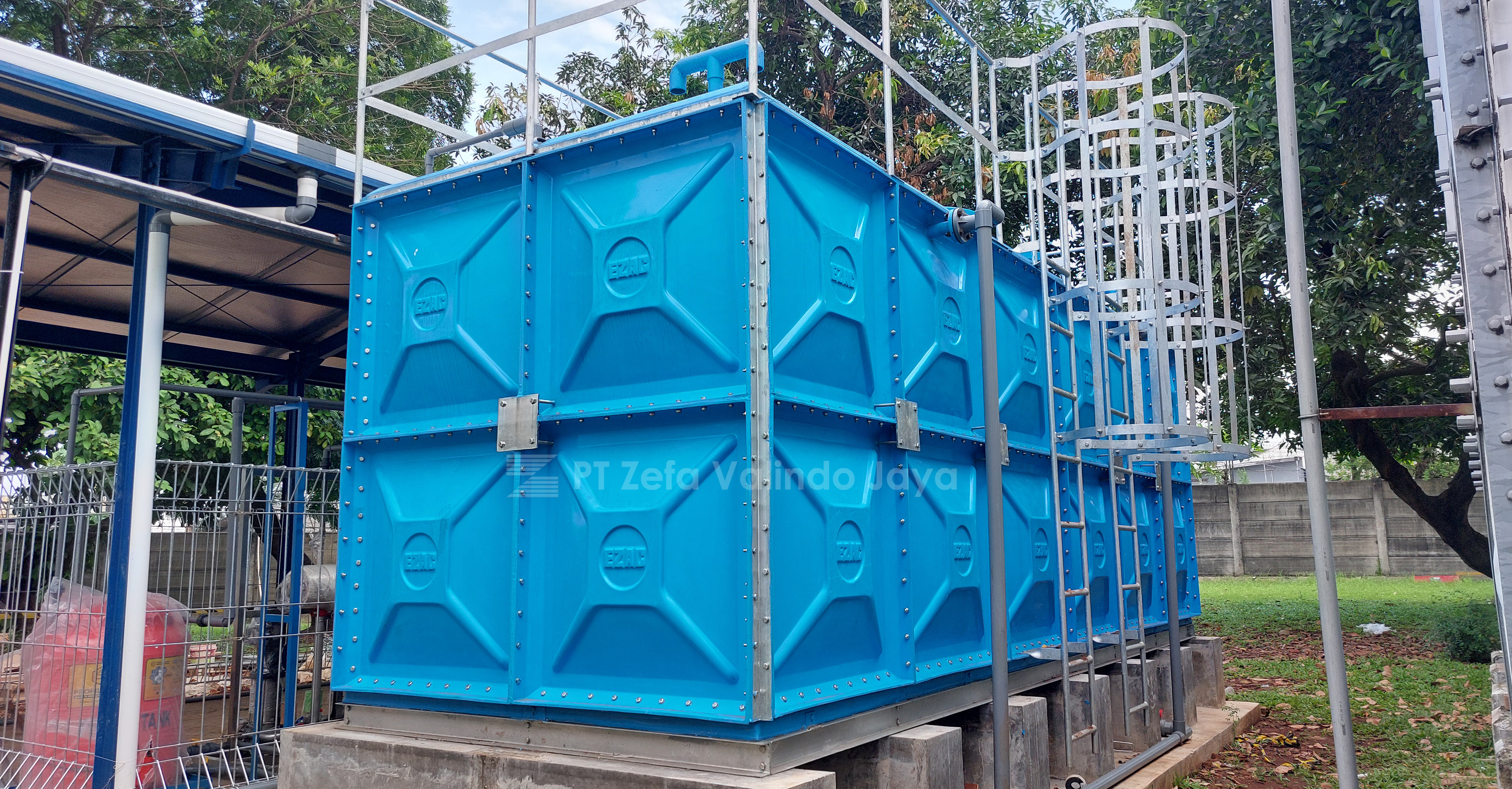Clean Water Tank Construction Work

PT Zefa Valindo Jaya was entrusted by one of our loyal customer to develop a clean water storage system.
In this system, the clean water originates from the local municipal supply (PDAM) and consists of four key components: a valve system for PDAM water flow, a ground tank, a sludge tank, and a clean water tank (also known as a panel tank).
The automatic valve system regulates the flow of PDAM water and is directly connected to the ground tank. When the tank reaches its maximum capacity, the valve will shut off automatically to prevent water waste and potential overflow.
The ground tank is designed with two main compartments. The first compartment functions as an initial holding chamber and sedimentation area, where sludge particles naturally separate from the water flow. In this first compartment, a sludge pump—specifically a submersible pump—is installed. This type of pump is designed to operate fully submerged in liquid. It periodically removes the accumulated sludge and transfers it to the sludge tank.

Water from the first compartment in the ground tank flows into the second compartment through an overflow system. Since the sedimentation process has already taken place, the water in the second compartment is much clearer and ready for further processing.
From the second compartment, clean water is pumped using a booster pump into the Clean Water Tank.
The clean water tank has a capacity of 24 m² and is made of FRP (Fiberglass Reinforced Plastic). The advantages of FRP include excellent resistance to corrosion and extreme weather, long service life, low maintenance, and customizable dimensions to fit specific needs or spatial constraints.
Afterward, the water stored in the clean water tank is directed to a multimedia filtration system. In this process, the water is filtered using silica sand and activated carbon to ensure consistent quality in accordance with standards required for industrial equipment.
The clean water is then distributed to several critical units, including the cooling tower and other processing equipment, to support seamless and efficient operations.

